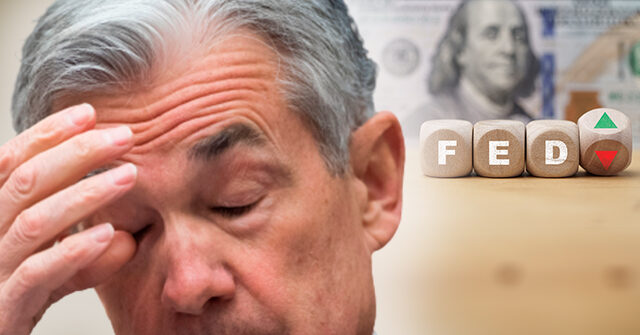Top News
Breitbart Business Digest: The Fed Just Lost Control of Interest Rates

Powell’s Speech Backfired
Jerome Powell probably did not mean to trigger a significant easing of financial conditions on Friday, but that’s exactly what he did.
The chairman of the Federal Reserve gave a talk today at Spelman College in Atlanta in which he declared that it was “premature” to conclude that monetary policy was “sufficiently restrictive” or to speculate on when the central bank might start cutting rates. He even added that the Fed is prepared to tighten further if needed.
The market’s reaction was a flat-out rejection of that idea.
Federal Reserve Chairman Jerome Powell speaks at Spelman College in Atlanta, Georgia, on Dec. 1, 2023. (Alyssa Pointer/Bloomberg via Getty Images)
Just a few days ago, no one in their right mind would have told you there was any chance the Fed might lower its benchmark interest rate target in at the Federal Open Market Committee (FOMC) meeting scheduled for the end of January. The big debate on Wall Street was whether the Fed would cut in May or June, which was markedly earlier than Fed officials appear to have been signaling.
After Powell’s speech on Friday, however, the market was pricing in a 16 percent chance the Fed will ease in January. While that is still only a slim chance, it is a significant move from zero.
The Markets Go A-Marching
Looking out to the March meeting, the move is even more striking. Hedge fund manager Bill Ackman made headlines earlier this week by arguing for a March rate cut. At the time, this was a very far out-of-consensus call that many folks shrugged off. Ackman likes to make headlines and has a reputation for bold—and often wrong—forecasts about markets, companies, and the economy.
He was joined, however, by Neel Dutta, head of U.S. economic research at Renaissance Macro Research. Dutta is a serious economic analyst and a thoughtful Fed watcher who was one of the few Wall Street economists to correctly defy the consensus view that we would see a recession this year. He told Bloomberg News this week that the Fed was on a “glidepath” to a cut in March because it is “highly likely that core inflation is running sub-2.5 percent on a six-month basis by the first quarter of next year.”
Even still, by yesterday, the fed funds futures market was pricing in just a 43 percent chance of a rate cut at the March meeting. That was up from a 21 percent chance a week ago and 13 percent a month ago.
Following Powell’s speech the odds went up to 64.4 percent, according to the CME FedWatch Tool.
If you are reading this, Mr. Chairman, you might want to look away because after this it gets even uglier.
The odds that the Fed will have eased at least once by the May meeting jumped to 90 percent on Friday. A week ago, they stood at 47.8 percent. In fact, there’s now close to a fifty percent chance that the Fed will be cutting rates a second time at that May meeting.
The fed funds futures have now priced in near certainty—98 percent—of at least some easing by the June meeting. They’re implying something like a 75 percent chance of two cuts by June and a 37 percent chance that June will bring a third cut. Going even further out—all the way to December 2024—the market is pricing in overwhelming odds that the Fed will have cut five or six times next year, which would mean more than one quarter-point cut every other meeting.
To see how far the market has moved ahead of the Fed, keep in mind that back at the September meeting, the Summary of Economic Projections showed the Fed penciling in a range of five percent to 5.25 percent Fed funds rate for year-end 2024. The market currently assigns a zero chance of that.
Bond Market Vigilantes Take Off Powell’s Head
It was not just the futures market that moved against Powell. The U.S. Treasury market—the largest and most liquid financial market the world has ever seen—swung its axe like a medieval executioner. And it was Powell’s head on the block.
The yield on the 10-year Treasury dropped 12 basis points, a huge move, to 4.23 percent, the lowest since early September. The yield on two-year Treasuries dropped 15 basis points to 4.568 percent.
Lower bond yields mean easier financial conditions. The decline in the 10-year Treasury yield, for example, is likely to drag down mortgage rates, re-energizing the housing market. Lower bond yields push investors into riskier assets, pushing up the prices of stocks and making investment in business expansion more attractive.
It was as if the bond market were mocking Powell’s claim that “the full effects of our tightening have likely not yet been felt.”
Powell does not get a second chance at this. The Fed’s official blackout period before the next meeting starts tomorrow, which means we will not hear from Fed officials on monetary policy until after the next FOMC meeting on December 12 and 13.
The Fed lost control of interest rates on Friday. We will not know until the next meeting if it can win it back.
Read the full article here


















